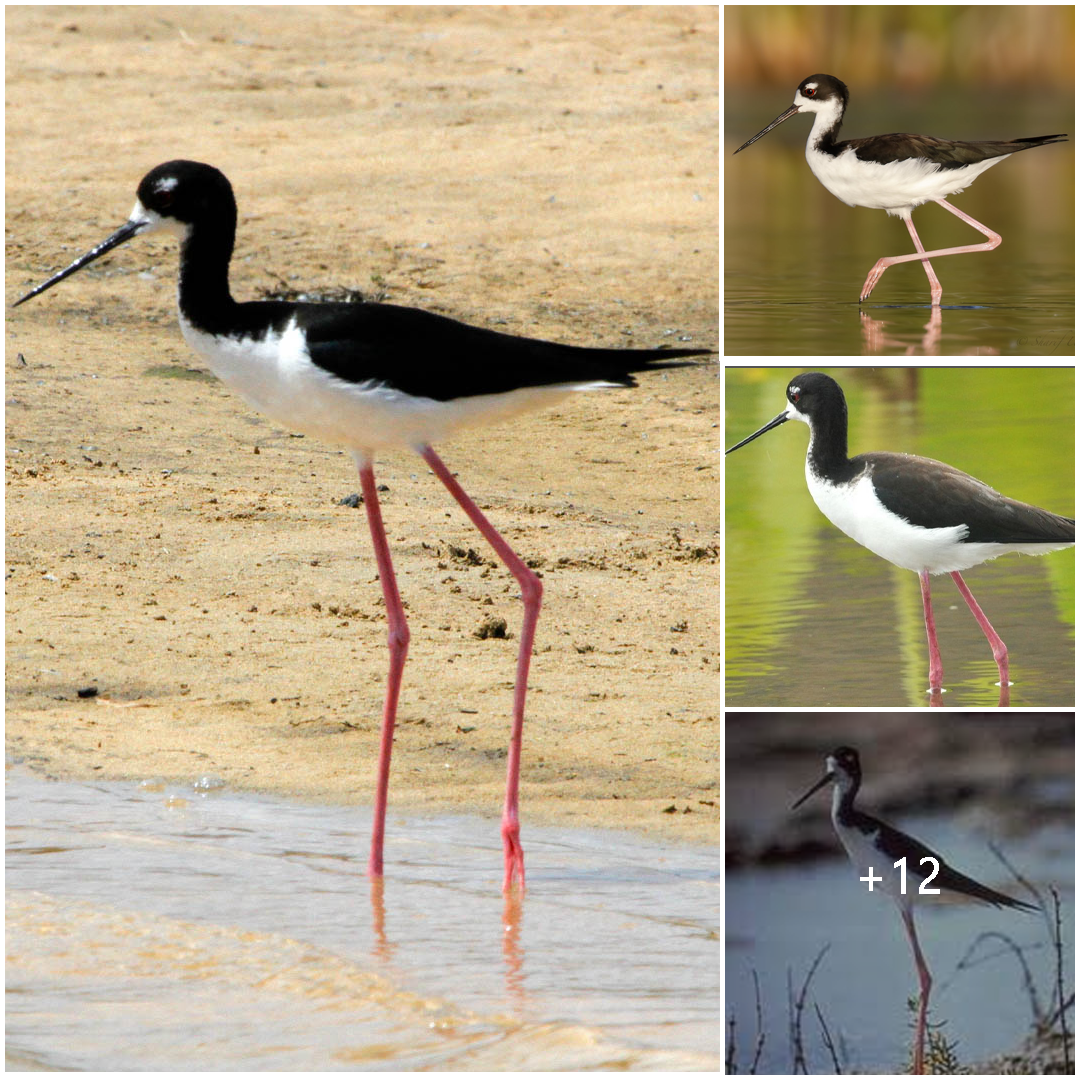
The Majestic Hawaiian Stilt: Guardian of Wetland Ecosystems
The Hawaiian stilt, also known as aeʻo in Hawaiian and scientifically named Himantopus mexicanus knudseni, is a remarkable bird endemic to the Hawaiian Islands. With its striking appearance and important ecological role, the Hawaiian stilt is a symbol of the unique biodiversity found in the islands’ wetland habitats.
Appearance and Physical Characteristics: The Hawaiian stilt is a long-legged wading bird characterized by its slender body, long neck, and distinctive black and white plumage. It stands tall on its thin, pink legs, which are perfectly adapted for traversing the shallow waters of wetlands. The bird’s long, slender bill is used for probing mud and water in search of prey, while its red eyes provide a striking contrast against its black head and neck.
Habitat and Distribution: Hawaiian stilts are primarily found in wetland habitats such as estuaries, salt pans, marshes, and coastal lagoons throughout the Hawaiian Islands. They are well adapted to both freshwater and saltwater environments, often foraging in brackish coastal areas where they can find an abundance of aquatic invertebrates and small fish. Although they are native to Hawaii, their populations have declined due to habitat loss and human disturbance.
Feeding Behavior: As carnivorous birds, Hawaiian stilts primarily feed on a diet of small crustaceans, mollusks, insects, and fish. They use their long, slender bills to probe the mud and shallow waters for prey, using a tactile sensation to detect movement and capture their food. Hawaiian stilts are skilled hunters, adept at catching fast-moving prey in the murky waters of wetland habitats.
Breeding and Reproduction: During the breeding season, which typically occurs from February to July, Hawaiian stilts engage in elaborate courtship displays to attract mates. Males perform aerial displays and vocalizations to advertise their presence and establish territories, while females select mates based on these displays. Once paired, the birds build shallow nests made of vegetation and mud in the wetlands, where they lay a clutch of eggs. Both parents take turns incubating the eggs and caring for the young chicks after hatching.
Conservation Status: The Hawaiian stilt faces numerous threats to its survival, including habitat loss, predation, pollution, and human disturbance. Wetland degradation and urban development have resulted in the loss of critical breeding and foraging habitats for these birds, leading to declines in their populations. Conservation efforts focused on habitat restoration, predator control, and public education are essential for protecting the Hawaiian stilt and ensuring the long-term health of Hawaii’s wetland ecosystems.
In conclusion, the Hawaiian stilt is a magnificent bird that plays a vital role in maintaining the health and biodiversity of Hawaii’s wetland habitats. With its elegant appearance and important ecological contributions, the Hawaiian stilt serves as a symbol of the unique natural heritage found in the islands. Protecting and preserving their habitats is essential for safeguarding the future of these iconic birds and the fragile ecosystems they call home.





